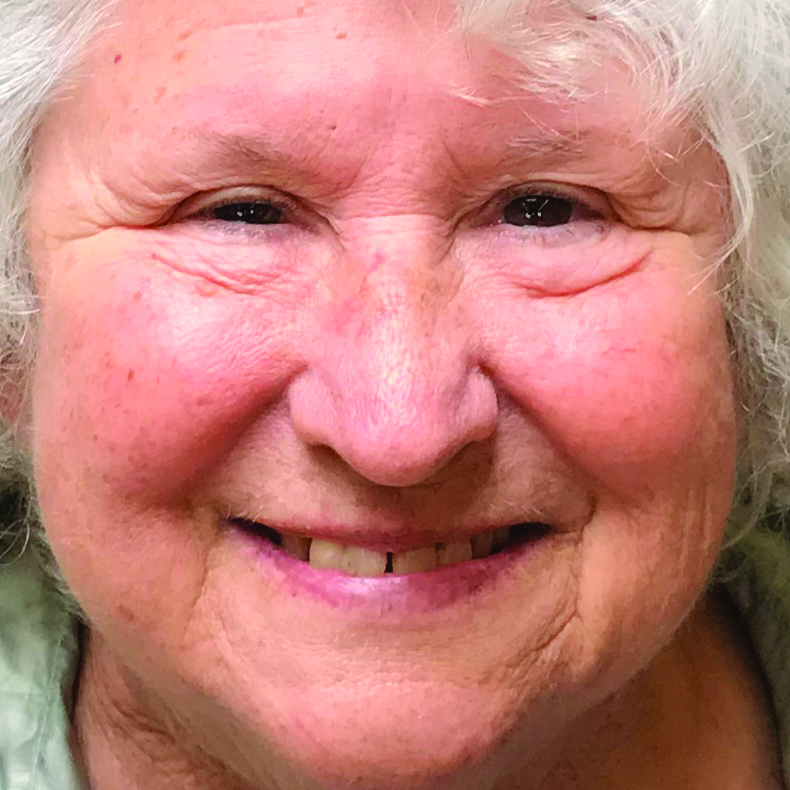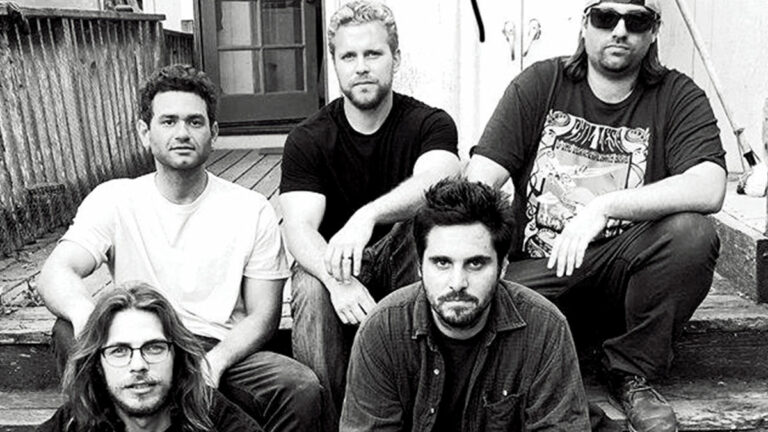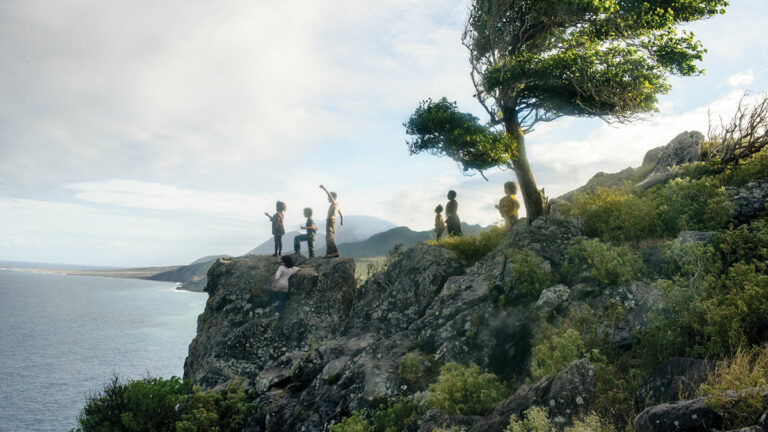As COVID-19 began spreading through California, Event Santa Cruz owner Matthew Swinnerton says he was initially loath to postpone the 11th annual NEXTies, an awards show celebrating Santa Cruz’s best and brightest that was originally scheduled for this upcoming Friday.
But over the past few weeks, health officials began releasing stricter and stricter guidelines in light of a growing number of COVID-19 cases. It became quickly apparent, Swinnerton says, that rescheduling the event was the right thing to do—even if it wasn’t easy.
“Oh man, it hurt!” says Swinnerton, whose business model is built around bringing together crowds of people for events like the NEXTies. “We were gonna keep on going, until we thought there would be more of an actual outbreak in Santa Cruz, but then we heard there were two people, and then three and then four [infected], and what really clinched it is when the health agencies recommended canceling events of 50 people or more. At that point, we felt the seriousness of it.”
The Santa Cruz County Health Services Agency (HSA) has been recommending that no one host gatherings of 50 or more people through March 22. Last week, a wave of cancellations and postponements started sweeping through the region.
It’s also been the trend nationwide. The NBA suspended the rest of its season indefinitely, prompting the other major sports leagues to follow suit. Not long after came the suspended seasons of development-league basketball teams, like the Santa Cruz Warriors.
In Santa Cruz on Monday, the HSA issued a shelter-in-place order asking county residents to limit all trips to “essential” activities, like trips to the grocery store. The Beach Boardwalk is closed through March 27. The county’s K-12 schools are closed all this week (although they’re still offering limited services, including free meals to some students). UCSC and Cabrillo College have suspended all but a few in-person classes, offering online instruction wherever possible. UCSC also postponed most of its Alumni Weekend events indefinitely. The city of Santa Cruz is limiting non-essential travel and in-person meetings and classes, even temporarily shuttering the city’s library system.
The wave of cancellations hit the arts first—and hard.
Venues like the Catalyst, the Rio Theatre, Felton Music Hall, Michael’s on Main and DNA’s Comedy Lab have all cancelled or postponed shows. The Santa Cruz Museum of Art and History is also closed through this Sunday. The Santa Cruz Symphony has cancelled two concerts at the end of the month. The Watsonville Film Festival has been postponed. The Motion Pacific dance studio is closed through March 20. Landmark Theatres, owner of the Nickelodeon and Del Mar Theatres, announced it is temporarily closing all of its cinemas, as did the Regal chain, owner of the Santa Cruz Cinema 9.
It’s anyone’s guess when this event hiatus will end.
According to the most recent announcements from health officials on Monday, the county has confirmed nine cases of COVID-19. County Health Officer Gail Newell doesn’t know when it will be safe again to hold events of 50 or more people. If the virus peters out in the spring, that will be welcome news—for event organizers and for everyone else. But if it doesn’t, the wait could go on much longer.
“We can anticipate that this disease will be with us for the next few weeks at least, possibly months,” Newell says. “We’re hoping this virus behaves like a flu virus, where it wanes during warmer months and that it will be seasonal. A vaccine will not be available until a year from now—April of 2021.”
RESPONSIBLE PARTIES
Social distancing and isolation are behaviors recommended to slow the spread of disease.
Even if these methods cannot stop disease spread altogether, they can at least make it so that the rate of illnesses doesn’t spike quickly, a phenomenon that would place a huge strain on the nation’s healthcare system.
Last week, the HSA announced that the virus appears to be spreading within the community, and the agency has shifted its strategy away from containment toward one of mitigation. Social distancing measures are still in place.
Do-It-Ourselves Fest organizers did not take lightly their decision to cancel the eighth annual celebration of music and community in Boulder Creek. Drew Fisher, one of the festival’s co-directors, is scrambling to adapt, but he says it’s all probably for the best.
“We try not to subscribe to fear-based decision making,” he says, “but it became really clear that it’s more than that. It actually makes a lot of sense to slow the spread of a virus, to not overwhelm our hospital facilities.”
Fisher understands that the concertgoers might not have been at much risk from COVID-19, but he knows that large gatherings can pose a threat to other members of the broader community.
County spokesperson Jason Hoppin says healthy people can carry and spread the virus to more vulnerable people around them, even without presenting any symptoms. “The risk to them is almost nonexistent; it’s probably going to be a mild cold, but it can be extremely dangerous if you give that to your grandfather,” he says.
The impacts of the virus also extend far beyond public health and safety. COVID-19 has begun stoking fears of a potentially slowing economy, and Fisher says artists are already hurting.
“I think artists are hungry right now,” Fisher says. “I’m obviously out of work now; all my artist friends are out of work.”
In lieu of a festival, Do-It-Ourselves organizers are brainstorming new ways to promote the artists and contributors. Fisher says they may consider livestreaming concerts.
Similar brainstorming efforts stretch far and wide. An international coalition of artists have created an online resource page for creatives who rely on freelance work at covid19freelanceartistresource.wordpress.com. Brown Paper Tickets, a vendor for many Santa Cruz events, recently sent an email to its entire mailing list asking them to support the arts by buying a ticket for a future event, in light of widespread postponements and cancellations.
Hoppin says county leaders are not taking the community members’ life adjustments, big and small, for granted.
“We have been very pleased so far with the cooperation of the community, heartened and amazed, actually, at the number of people that have made real sacrifices,” he says.
EMERGENT CARE
Of course, not all events are arts-related. COVID-19 could prove disruptive to political movements as well.
Organizers of a planned signature-gathering campaign to try and block a parking garage from getting built downtown have put their plans on indefinite hold, in light of disease risk.
The climate action group Extinction Rebellion Santa Cruz has felt the impacts of the epidemic, as well. The group typically organizes public protests, like the “Civil Disco-bedience” action it hosted outside the Chase bank on Ocean street on Feb. 28, when five protesters were arrested. It had a climate forum planned for this Friday, featuring bestselling author Jonathan Franzen.
However, the coronavirus left organizers like Peter Melton with an uncomfortable choice, as they tried to weigh the existential threat that is climate change against a looming public health crisis. Extinction Rebellion’s Santa Cruz branch decided to postpone its discussion.
As they reflect on that difficult decision, activists are starting to think about different ways of mobilizing going forward.
“It instantly cut through the strategy of getting people together so that we could try to raise awareness,” Melton says. “So we’ve got to look at new ways; the strategy has to adapt. How do we do this online? How do we utilize this lesson while taking all the precautions we need to take?”
If there’s any good news, Melton says it’s that the new coronavirus may offer climate activists like himself a new dimension to their work. Generally speaking, civil disobedience, he explains, is an attempt to disrupt business as usual, hopefully forcing everyday people to stop and rethink everything in their lives.
Pretty soon, COVID-19 may start doing that work for them.
“I’m holding onto the silver lining that this is perhaps the right size of emergency,” Melton says, “that might wake up our culture to the grander emergency that lurks right behind it.”
Jacob Pierce contributed to this report.
Coronavirus Coverage
For continuing in-depth coverage of the new coronavirus and its effects locally, visit goodtimes.sc/category/santa-cruz-news/coronavirus.
To learn about action you can take now, whether you’re seeking assistance or want to find ways of supporting the community, visit goodtimes.sc/santa-cruz-coronavirus-resources.





























